Primary school teachers really do it all! Although, there can be a few key learning areas that sit a little outside of our personal comfort zone (for me, that would be science and mathematics). However, teaching drama in the primary classroom needn’t be one of them.
Fossicking through a list of “40 Drama Activities for Kids” trying to find one that will work in a Drama lesson for your class is surprisingly time-consuming. This post will show you how you can make simple adaptations to already familiar learning activities, in order to explore how voice, facial expression, movement and space can be used to create role and communicate meaning.
This transferable approach will make planning K-3 Drama lessons easy, by illustrating how you can teach the basic elements of drama in a way that you are comfortable with, using familiar content drawn from almost any key learning area!
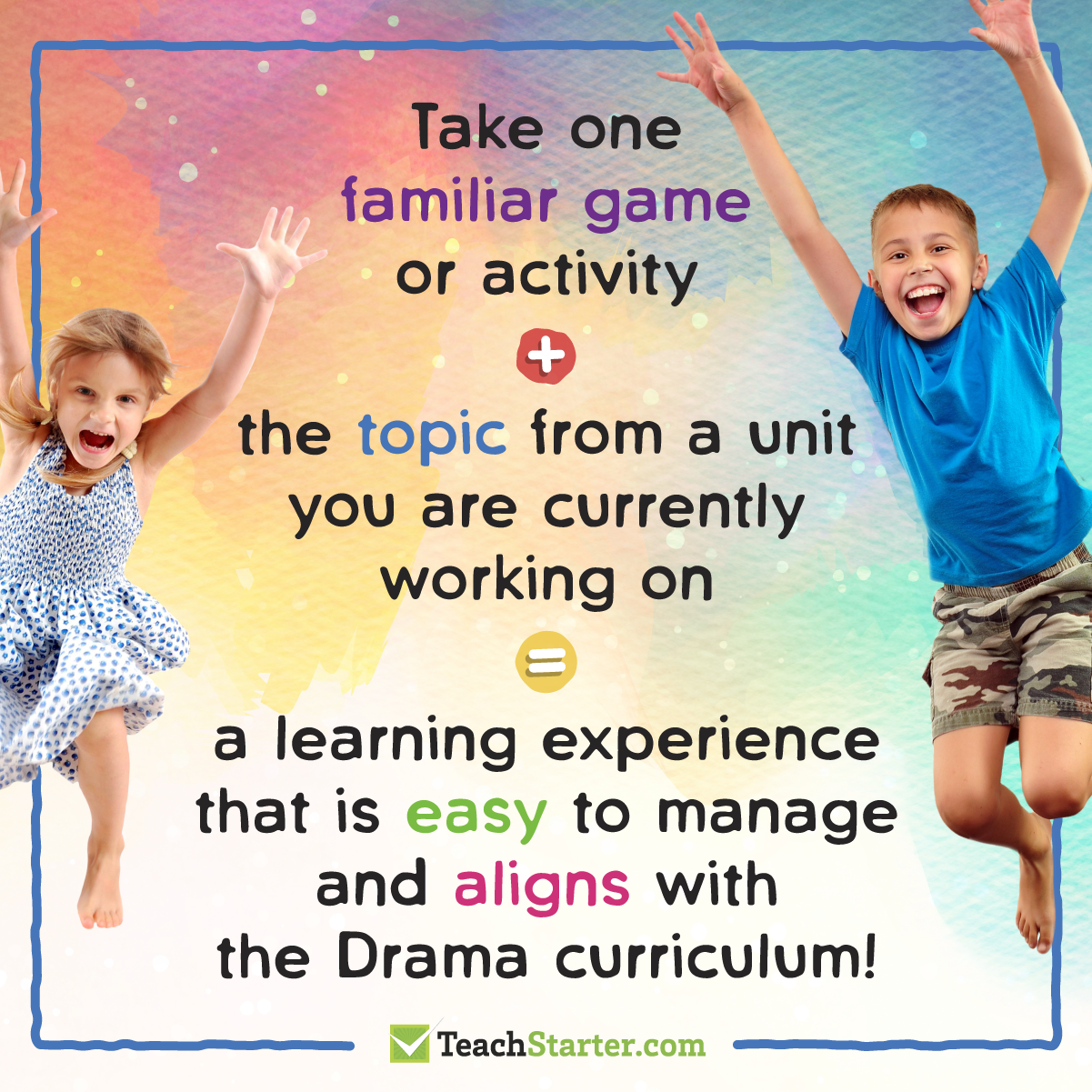
8 Drama Activities for Kindergarten to Year 3
1. If You’re ‘Something’ and You Know It
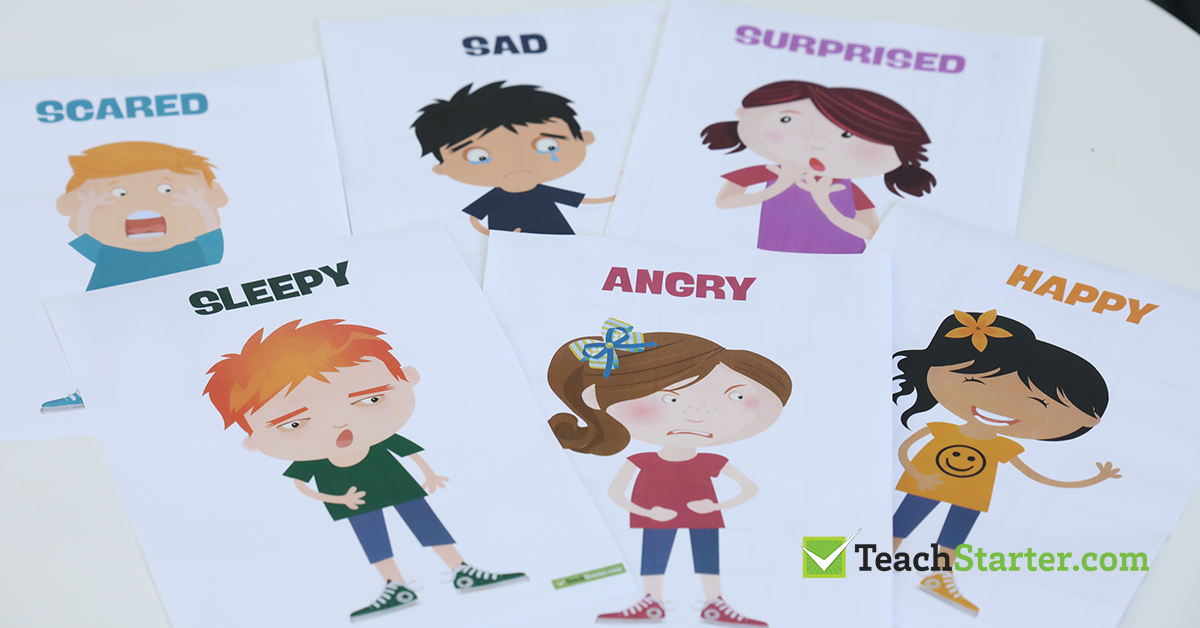
This twist on the traditional children’s song uses voice, facial expression and movement to communicate emotion. The beauty of this drama activity is the ease with which you can increase or decrease the complexity of the actions and emotions your students enact.
For example:
- If you’re happy and you know it, smile wide.
- If you’re excited and you know it, jump up high.
- If you’re tired, and you know it, it’s time to yawn.
- If you’re angry and you know it, stamp your feet.
You could use these Recognising Feelings Flashcards as a visual prompt for each instruction. These are great for younger grades and cater to the more visual learners in your class.
Check out our Feeling Synonyms Poster Pack and Developing Characters Poster Pack for more “If You’re ‘Something’ and You Know It” ideas!
[resource:13272][resource:12748][resource:12708][resource:11461]
2. Yes, Let’s!
This is a great improvisation game for younger students. You can introduce the concept of using movement to show who or what they are (role) in a fun and easy way.
- Stand with your students in a big circle and decide which direction the game will travel.
- Begin the game by inviting them to complete an action, such as “Let’s wobble like a jellyfish!”
- The rest of the circle energetically replies, “Yes, let’s!” and begins to move like wobbly jellyfish (staying in one spot, of course).
- Everyone continues the movement until the next person in the circle changes the action by saying, “Let’s…” with the new action they want the class to mimic.
- The group replies, “Yes, let’s!” and changes their movement to match the new action.
- Continue around until everyone has had a turn changing the action.
Use this fun classroom drama activity when teaching verbs! Give each student a verb flashcard to use as inspiration for the movement they lead the class in.
3. Make Your Own Fruit Salad

This activity is so easily adapted to most any theme, context or story you are exploring with your class. For this example, I have selected fairy tales but you can play this game using any relevant theme or narrative!
To make your own “Fairy Tale Fruit Salad”:
- Make a circle of chairs with one less chair than the number of students playing the game.
- Select three or four fairy tale characters, e.g., Big Bad Wolf, Wizard, Queen.
- Allocate each student a role by going around the circle, naming each a Big Bad Wolf, a Wizard or a Queen.
- One student stands in the middle and begins the game by picking out a certain role or characteristic of a role. For example, they may say, “Everyone who is a Queen!” or “Everyone who has brown fur!”.
- All of the students who are playing that role or have that characteristic stand up and move to a different empty chair. The key here is for students to move as their character would. Depending on the theme and the roles that you choose, this can be lots of fun!
- Whoever doesn’t make it to an empty chair remains in the centre and calls the next character name or characteristic.
- Students can choose to shout “Fairy Tale Fruit Salad!” and everyone must stand up and find a new chair.
Provide prompts and support for your students as needed. Older students may easily remember the three or four character names, while younger students may benefit from having the selected characters drawn, written or displayed on posters.
You could even create nametags or find small costume items or props to give each student to help them remember their role.
4. Capture the Treasure
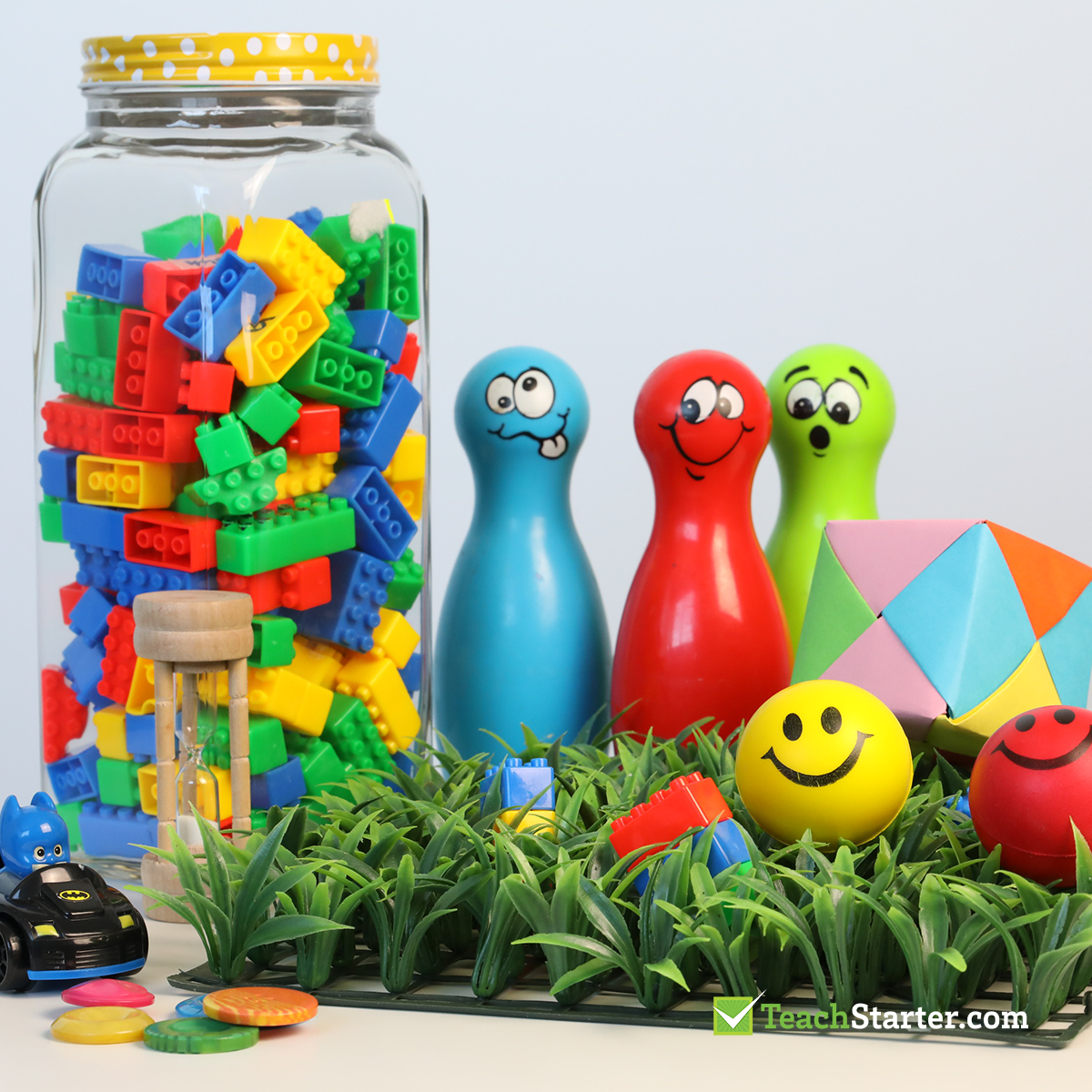
This drama game is a variation of the traditional game ‘Grandma’s Footsteps’ and an excellent introduction to the dramatic elements of role, movement and, for Years 3+, the element of tension.
- One student, “The Guard,” stands at the far end of the room or outdoor space, with their back to the rest of the class. The Guard holds an object deemed to be “the treasure”.
- The rest of the class line up in a horizontal line facing the Guard.
- When the Guard has his or her back to the line, classmates can take sneaky steps toward the Guard.
- If the Guard turns around, all students must freeze in an action pose (e.g., washing hair, climbing a mountain, playing tennis).
- The Guard can ask three students to unfreeze, bringing their actions to life. If the students cannot show that their chosen pose is a “real” action, they return to the starting line.
- When someone in the class touches the back of the Guard, they become the new Guard for the next game round.
Choose Your Own Unit-Specific Adaptation
“Capture the Treasure” can be adapted to a specific context in order to connect to your current units.
- Select a “treasure” object that is related to a relevant topic or theme.
- Identify three or four main roles or characters that can also be connected to the theme.
- Allocate a character to each student, and when students move towards the Guard, their movements and their frozen action poses must be ones that their character would do.
For example, if your unit theme is family, the roles could include a grandparent, a baby and a pet dog! (Remember, your students can use movement to take on the role of most anything – animate or inanimate.) Older students may enjoy trying to embody and come up with frozen action poses for things like a car, a tree or rain!
Have a go at presenting your class with a context and characters for this game. You may be surprised by just how creative and spontaneous your younger students may be!
5. Follow the Story
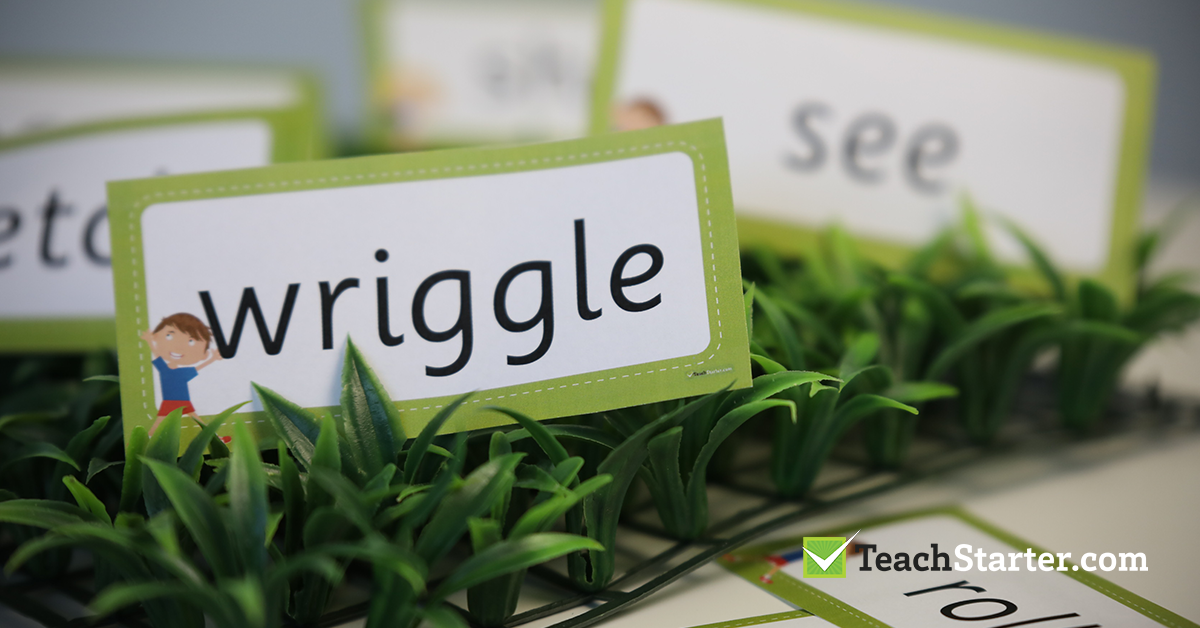
You can use this classic game to teach students about the dramatic element of movement. The basic concept of ‘Follow the Leader’ can work beautifully by adding a contextual twist.
- Students stand in a single line with a designated leader (you may like to have two shorter lines if you are comfortable to set boundaries for and manage both groups).
- The leader decides where the line will go, and how it will move.
- All of the students in the line follow the leader, copying their actions.
How to add a relevant context:
You can add in a suitable layer of context from any unit you are doing with your class. This turns “Follow the Leader” from a simple physical game into a “Follow the Story” drama learning experience that explores improvisation, voice, movement, space and even the creation of tension, situation and role.
- Ask students to create a situation that will become the imaginary world that their line is exploring or travelling through. Establish this by choosing a place and describing what it looks like and what features it may have (water, mountains, trees, sand, a building with small or large rooms, etc.). The more detail you come up with before the game, the better!
- Students can select a character or role the leader (and subsequently the entire line) can take on when moving through this imaginary place.
- Movements and actions should then reflect the character and the environment the character is in.
6. Snake Sheds its Skin
This physical drama game is great for showing students how a large group can together use their bodies to create a single character (in this case, the character is a snake!). While it can be a little tricky to explain, once students know and understand how to play this game, it is always a favourite!
- Split students into two even groups, standing in two parallel lines (A & B).
- Have the groups face towards the centre of the space and, similar to the classic game of “Cat and Mouse”, students hold hands with the people on either side of them in order to form the ‘snake’ (the students on the ends of each line will have one hand free).
- Starting at the same end of each line, give each student a number, counting up from one. Student number one in line A should be standing opposite student number one in line B.
- Call out two consecutive numbers, e.g., “Five and six!”, and the students who are those numbers lift the arms that connect them.
- At this point, the students on each end of the lines have to lead the snake through the raised arms without letting go of their hands.
- With hands held, the body of the ‘snake’ twists through itself, and the first group to straighten back out into a line is the winner!
7. Traffic Lights
Traffic Lights is another classic children’s drama game with endless possibilities! In the traditional version, the teacher calls out a colour and students complete the action associated with that colour. For example:
- “Red!” – students freeze
- “Orange!” – students stand on one leg
- “Green!” – students walk around the space
Increase the complexity and add curriculum connections by modifying the calls and actions. You can make the actions specific to a situation or to characters from a familiar narrative. You may even like create actions that connect with key terms from a mathematics or science unit.
For example, when teaching students how to tell the time, you may like to use some of these variations:
- “Clockwise!” – students walk in a clockwise direction
- “Anti-clockwise!” – students walk in an anti-clockwise direction
- “AM!” – students stretch up to the sky
- “PM!” – students lay on the floor
There is really no limit to how you can adapt the Traffic Lights drama game!
8. What Are You Doing?
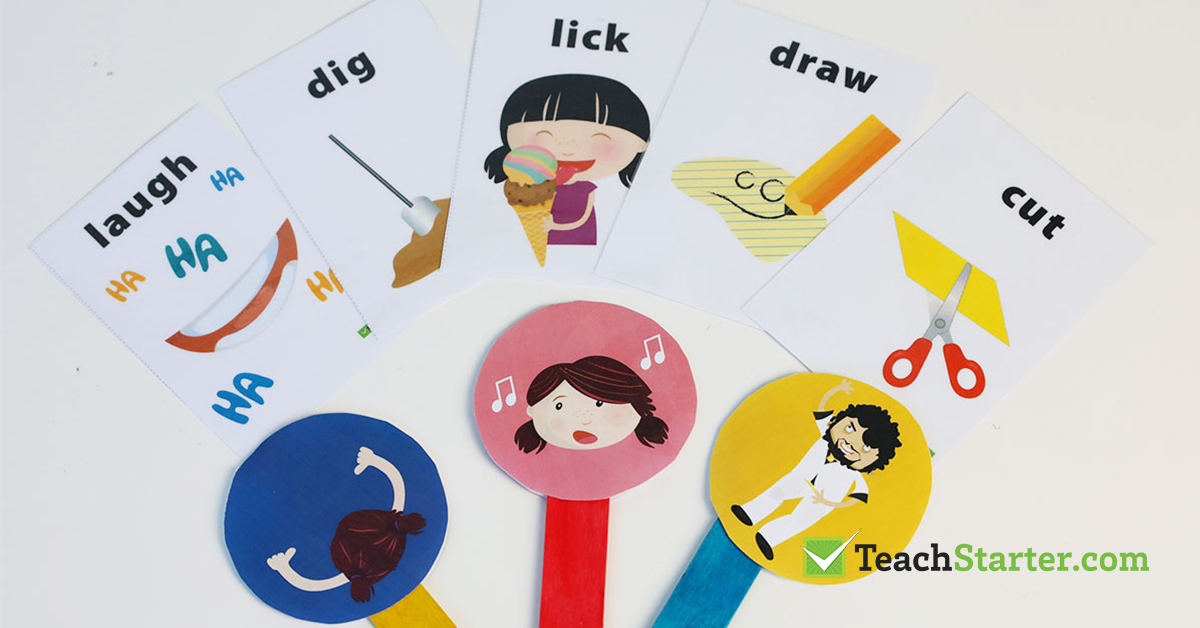
“What Are You Doing” is another excellent improvisation activity for primary school students (Hello again, verbs!), and one that is a slightly more challenging game than “Yes, Let’s!”.
Building the confidence of students to speak aloud can be supported through whole group improvisation activities like this. Students practise projecting their voice and using movement to communicate meaning in this fun mime activity.
- Stand in a circle and establish who will start the game.
- Tell students which direction the game will travel (clockwise or anti-clockwise).
- The first student begins by mimicking a simple, repetitive action (e.g brushing their teeth).
- The second student asks “What are you doing?”, to which the first student answers by saying something completely different to the action they are doing (e.g., while brushing their teeth the student may say “I’m swimming!”).
- The second student then begins to mime the new action (e.g. swimming).
- Continue the game around the full circle.
Add a familiar context from any key learning area in order to turn this game into a drama lesson activity.
Again, you can layer in context by asking students to take on a role from a story, a poem, or almost any context you are exploring in your current units. The actions they initiate should then reflect a part of the story. In doing this, your students will be using voice and movement to create a role and to communicate meaning about a situation, all of which are fundamental elements of drama.
At the risk of sounding reminiscent of Mr G from Summer Heights High, the elements of drama can be explored through almost any subject matter!
Drama is, essentially, the study of how people understand, relate to and communicate ideas about an idea or an aspect of a world (animate or inanimate, real or imagined).
For this reason, it really is one learning area with key concepts that can be explored using context from a seemingly “unrelated” learning area.
Now I’m thinking just how much fun a “Move Like a Minibeast” brain break would be at the end of a science lesson!
Hopefully, this post has illustrated how easy it can be to take a familiar children’s or classroom game and create an adaptation that provides both you and your students with the means to explore the elements of drama!
Drama Games for Kids – Printable Activity Cards
To get you started, we’ve created a set of 17 Drama Games for Kids activity cards! Simply download, print, and laminate the cards for use when you need a Drama lesson warm-up idea or a brain break for your students.
Do you know a teacher who might enjoy this approach to teaching K-3 Drama? Use the buttons under the title of this post to share it with them via email or on Facebook!
You may also like to check out more Drama games and activities listed in our blog post “Drama Games for Kids to Engage Them in the Classroom.


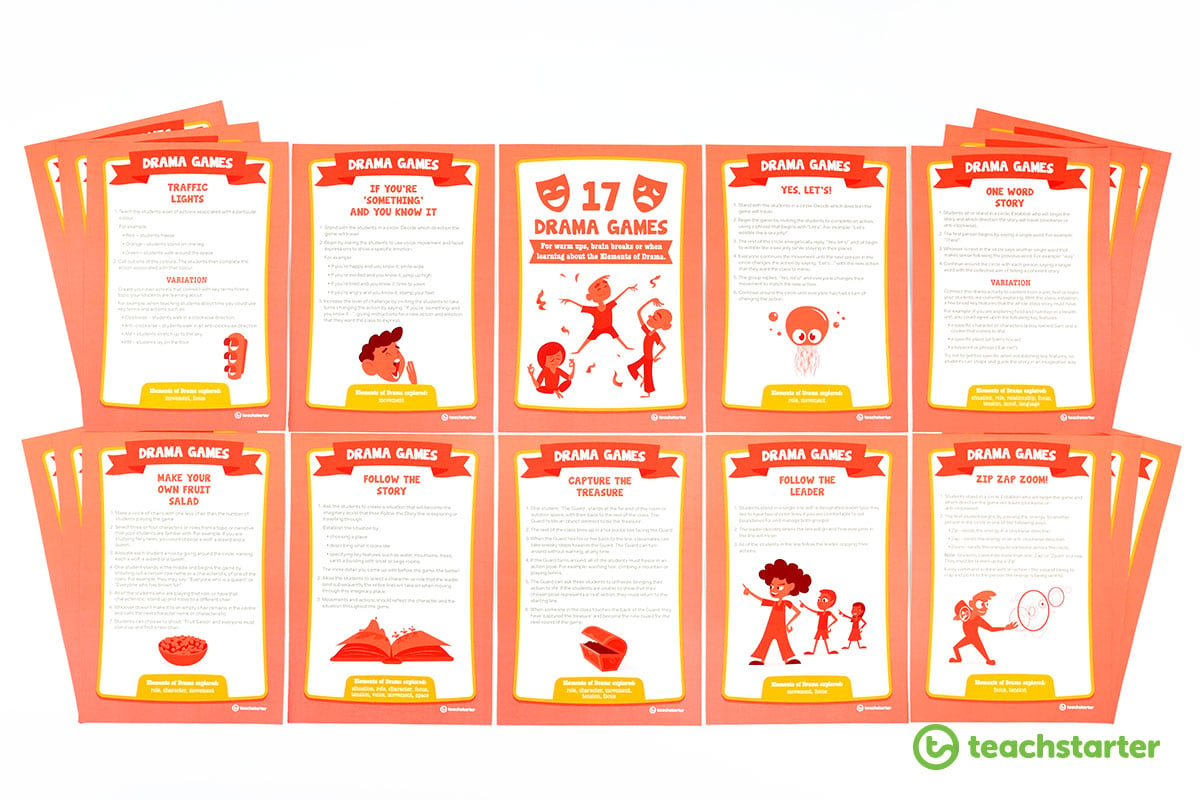
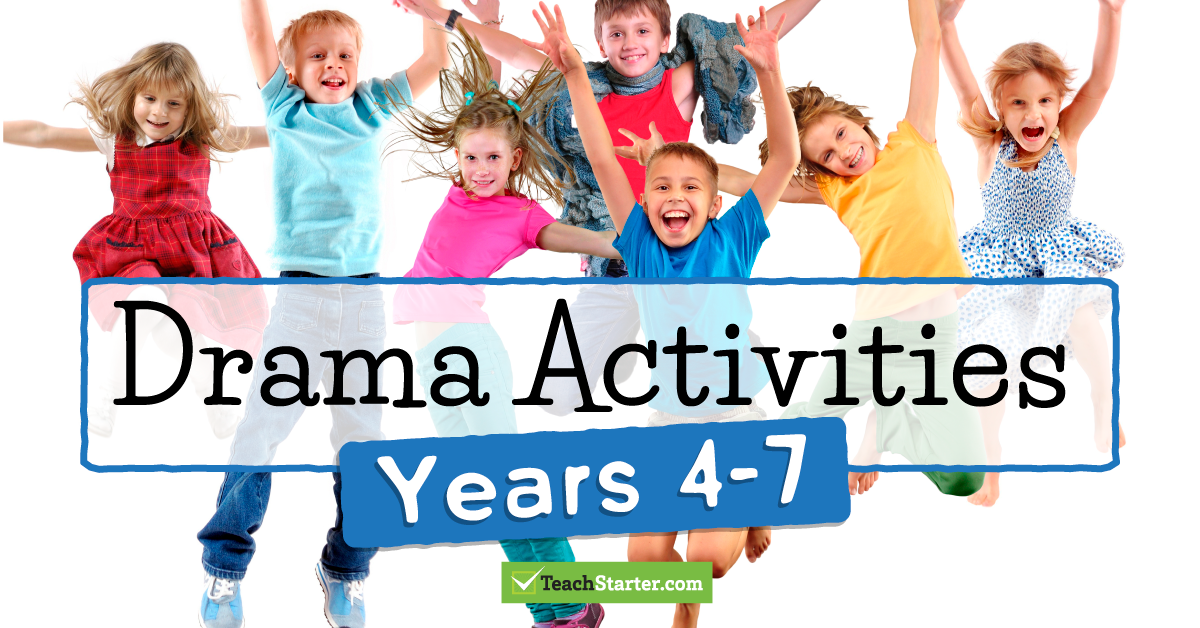






Thanks so much :) You've saved my life - it's been YEARS since i taught drama and was stuck for inspriation
Hey Nicola! Thanks for your fantastic feedback. It's great to know you benefitted from this resource. Have a great week!
These games are great. Love the link to the resources already on Teach Starter. Any DANCE games in the pipeline???
Hi Ann-Louise, Thank you for your lovely comment. I am so glad you are enjoying our resources. I will pass on your feedback regarding dance games to the resource team.